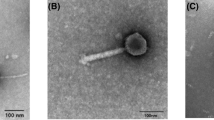Abstract
The effects of ozone (O3) on three types of microbes were studied. Test suspensions were exposed to 600 ppm O3 at room temperature. Control experiments were performed under identical conditions using oxygen gas. Bacteriophage λ was completely inactivated at 10 min while Escherichia coli and Candida albicans were only inactivated by factors of 105 and 104 respectively at 40 min. Exposure of a mixed microbial suspension to O3 for 5 min resulted in 100% killing of bacteriophages while the viability of E. coli remained unchanged. Various body fluids containing phages were exposed to O3. Compared to buffered solution, the decrease in phage titers was significantly slower in whole blood, plasma, and albumin. Both E. coli and C. albicans had increased production of thiobarbituric-acid-reactive substances with increased O3 exposure. 3H-labelled amino acids were incorporated into E. coli. O3 treatment resulted in a loss of radioactivity, indicating leakage of cytoplasmic contents. The data indicate that microbes are inactivated by O3 at different rates, possibly related to differential membrane permeability. The milieu in which microbes are present determines the effectiveness and outcome of O3 treatment.
Similar content being viewed by others
Author information
Authors and Affiliations
Additional information
Received: 15 October 1997 / Accepted: 24 February 1998
Rights and permissions
About this article
Cite this article
Komanapalli, I., Lau, B. Inactivation of bacteriophage k, Escherichia coli, and Candida albicans by ozone. Appl Microbiol Biotechnol 49, 766–769 (1998). https://doi.org/10.1007/s002530051244
Issue Date:
DOI: https://doi.org/10.1007/s002530051244



